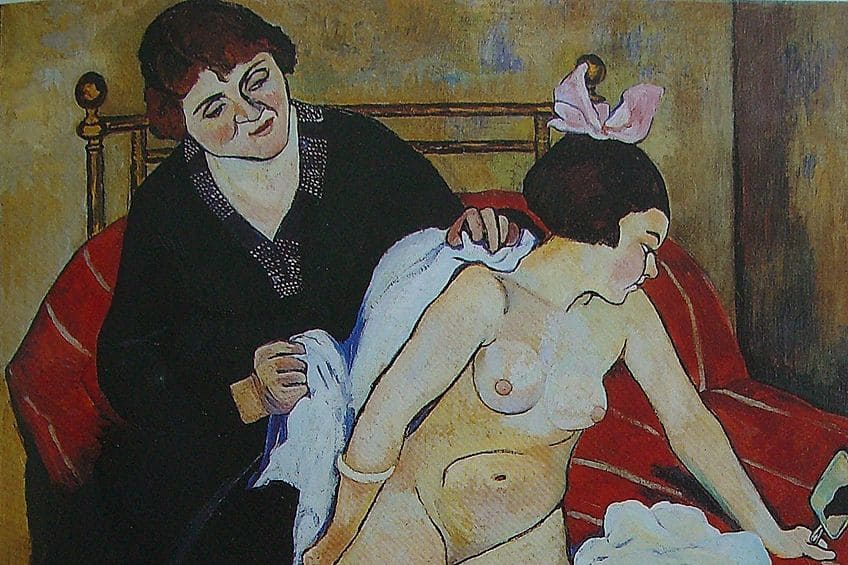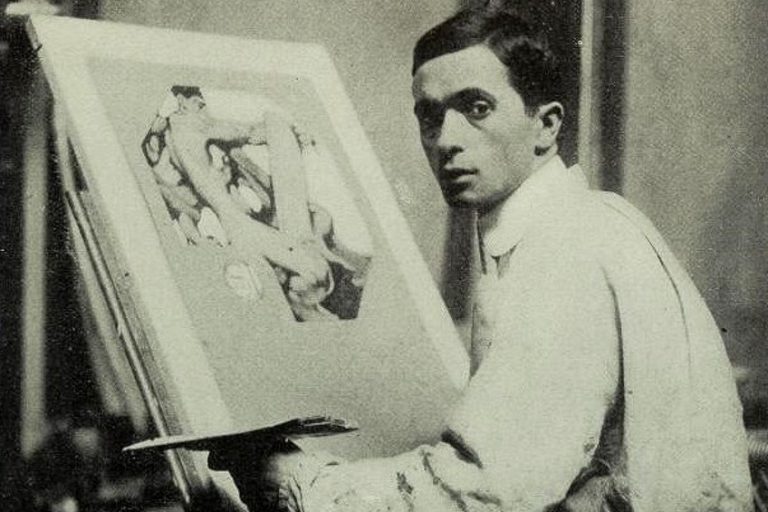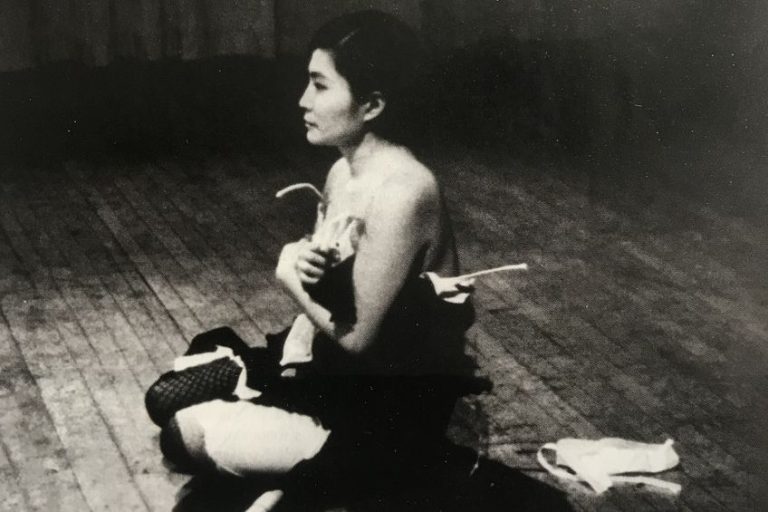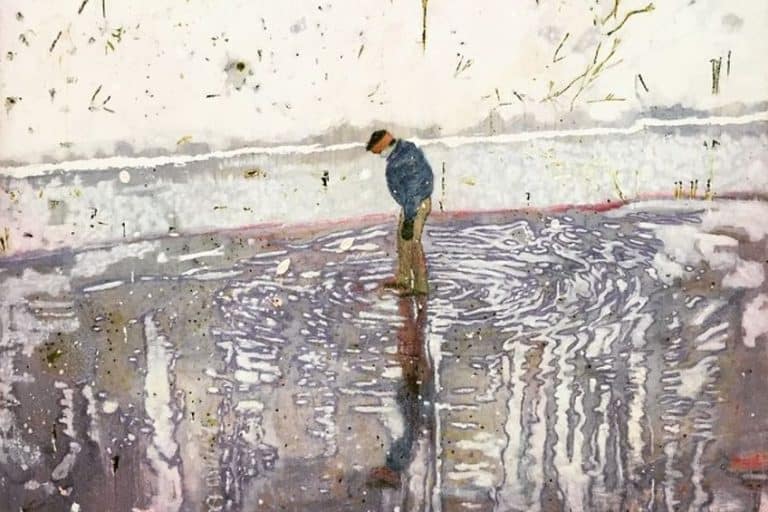French Contemporary Artists – Modern French Art
French modern artists have made significant contributions to the world of art in the 20th and 21st centuries. Their work represents a diverse range of styles, techniques, and themes that have helped shape the landscape of modern French art. French modernist painters, in particular, have been instrumental in pushing the boundaries of traditional artistic conventions, experimenting with new forms, and challenging established norms. In this article, we will explore the work of some of the most influential French contemporary artists, examining their unique perspectives and contributions to the world of art.
French Contemporary Artists: A Historical Perspective
French contemporary art has a rich and diverse history that spans over a century. From the Impressionist movement of the late 19th century to the avant-garde styles of the 21st century, French artists have constantly pushed the boundaries of traditional art forms and experimented with new techniques and styles.
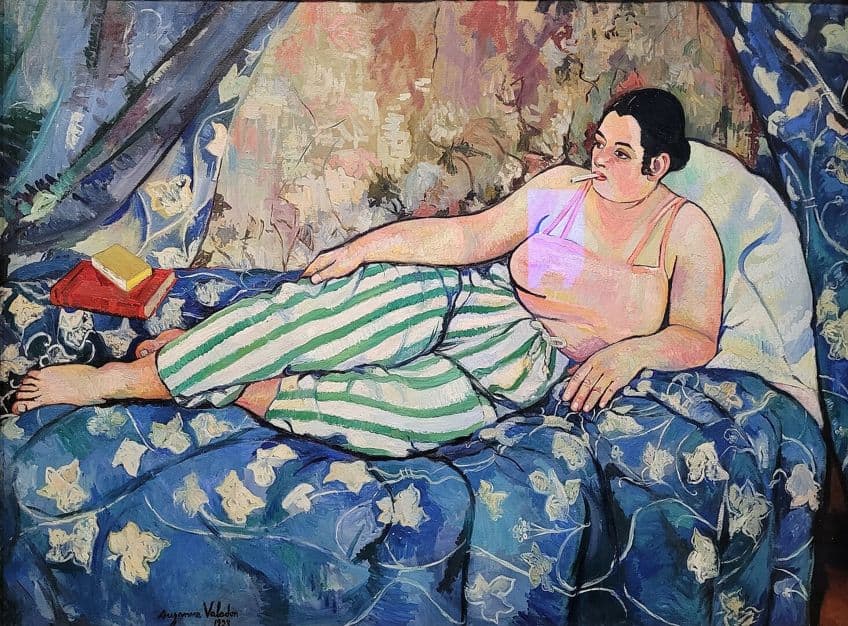
The Impressionists
The Impressionist movement, which emerged in the late 1860s, was a significant turning point in the history of French contemporary art. Artists such as Claude Monet (1840 – 1926), Pierre-Auguste Renoir (1841 – 1919), and Edgar Degas (1834 – 1917) challenged the established conventions of academic art and embraced a more spontaneous and free-form approach to painting.
The Impressionists aspired to seize the ephemeral moment and the impacts of light and color, paving the way for the development of modern art.
The Cubists
In the early 20th century, the Cubist movement emerged in France, led by artists such as Pablo Picasso (1881 – 1973) and Georges Braque (1883 – 1963). Cubism rejected the traditional notion of perspective and strived to break down things into their fundamental geometric shapes. This movement had a profound influence on modern art, and its impact can still be seen today.
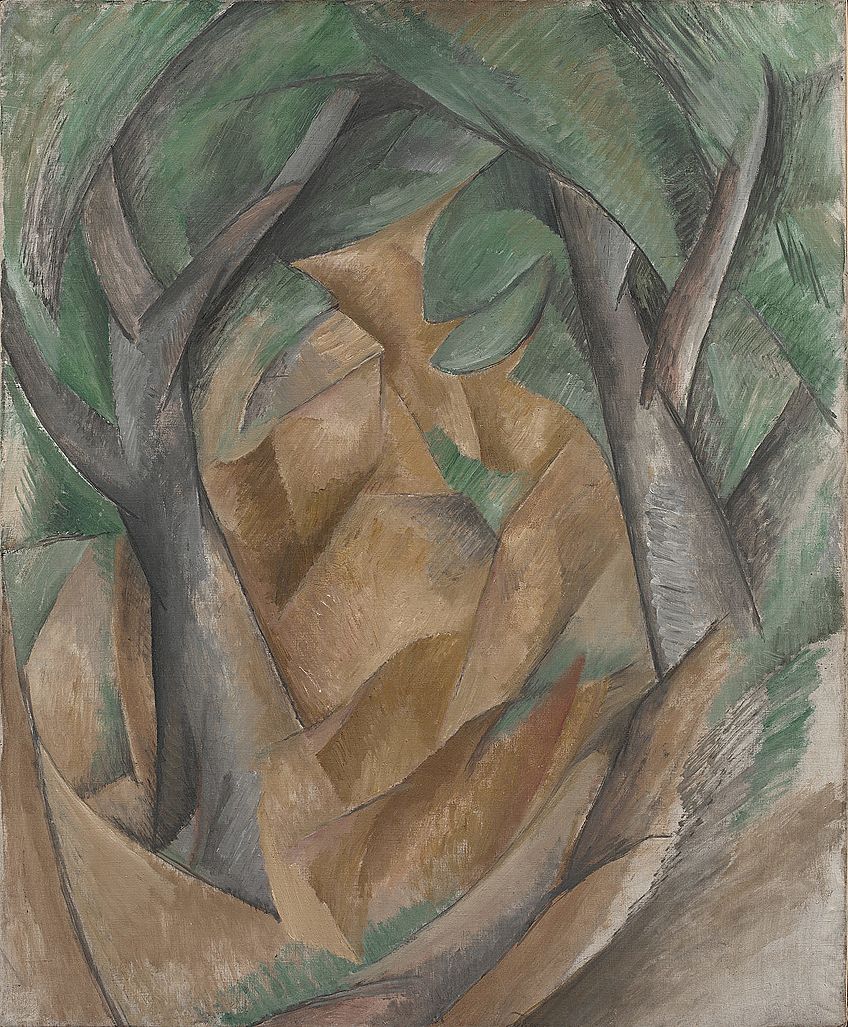
The Dadaists
The Dada movement, which originated in Zurich but had a significant presence in Paris, was a response to the horrors of World War I. Dada artists sought to reject traditional values and beliefs and create art that was absurd and nonsensical.
The movement had a significant influence on Surrealism, which emerged in the 1920s and embraced the irrational and subconscious.
Nouveau Réalism
In the post-war era, French contemporary art saw the emergence of the Nouveau Réalisme movement, which sought to bridge the gap between art and everyday life. Artists such as Yves Klein (1928 – 1962) and Arman (1928 – 2005) used everyday objects and materials to create their art, challenging traditional notions of what constituted a work of art.
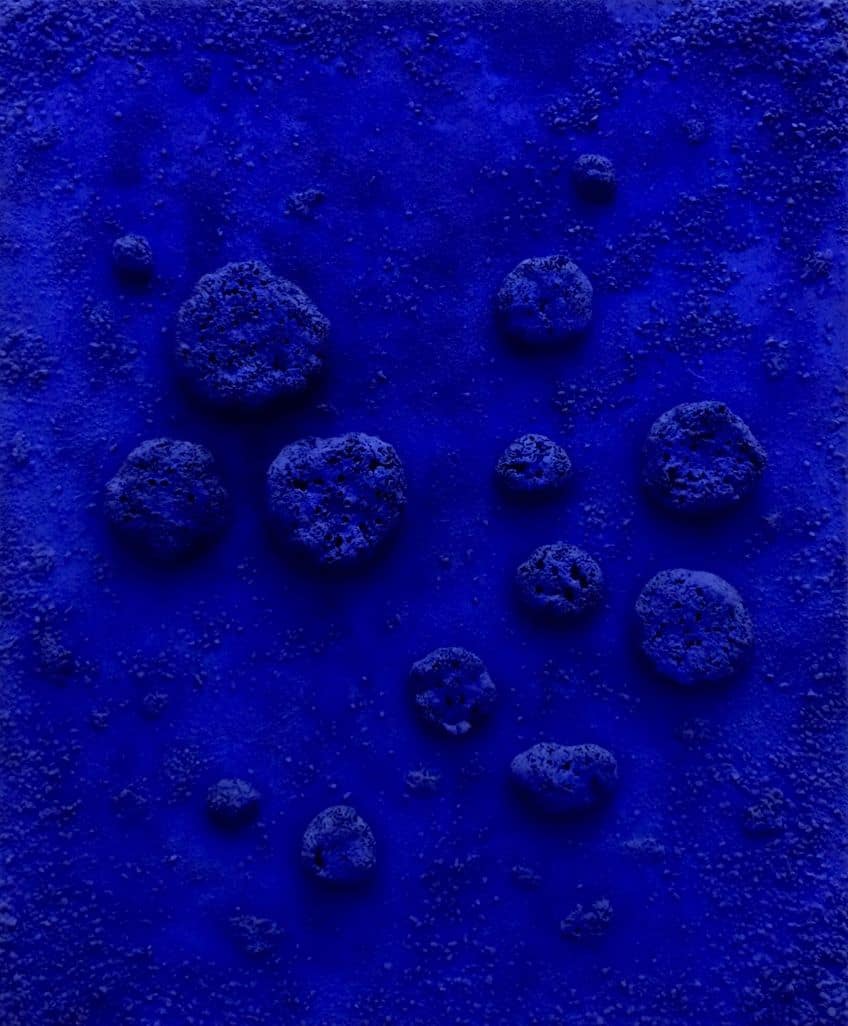
Conceptual Art and Minimalism
In the 1960s and 70s, French contemporary art saw the emergence of Conceptual art and Minimalism, which sought to emphasize the idea behind the artwork rather than its visual appearance. Artists such as Marcel Duchamp (1887 – 1968) challenged traditional notions of artistic skill and craftsmanship, paving the way for the development of contemporary art.
Let us look more closely at prominent French contemporary artists that shaped the course of French art history.
Famous French Contemporary Artists
In this section of the article, we will focus on specific famous French contemporary artists. Bearing in mind that female artists have been historically unrepresented and considering the volume of famous French artists, we have made an intentional effort to highlight the careers of a few famous female French artists as well.
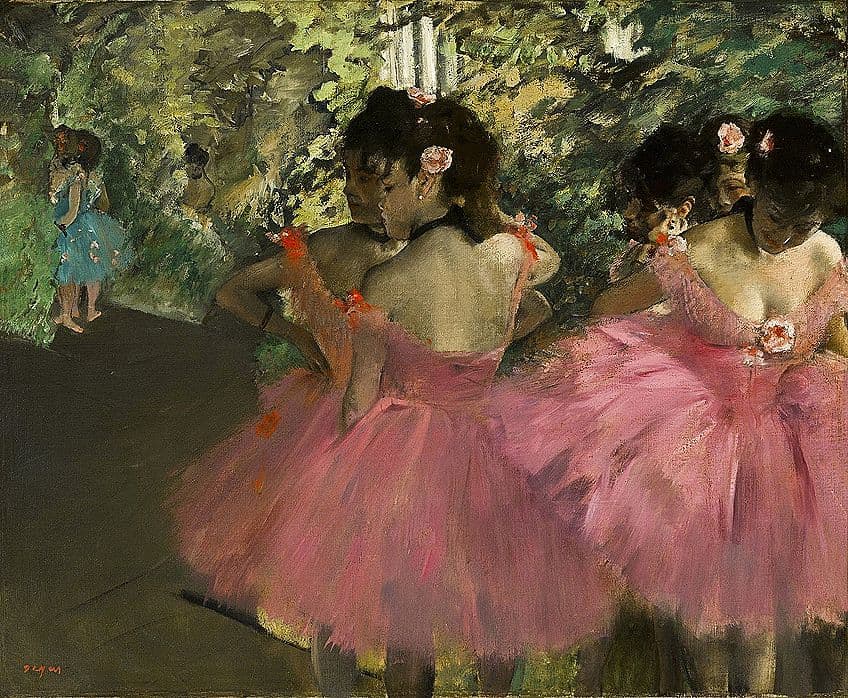
Élisabeth Vigée Le Brun (1755 – 1842)
| Date of Birth | 1755 |
| Date of Death | 1842 |
| Medium | Painting |
| Famous Artworks | Self-Portrait (1781), Marie Antoinette with a Rose (1783), and Self-Portrait with Her Daughter, Julie (1789) |
| Themes | Self-portraits, the life of women, and the domestic space |
Élisabeth Vigée Le Brun was a prominent French portrait painter who rose to fame during the 18th century. Her portraits, characterized by their soft colors, fluid brushwork, and delicate details, were celebrated for their ability to capture the essence of her sitters’ personalities and emotions.
Vigée Le Brun’s celebrated career spanned more than five decades, during which she painted portraits of many notable figures, including members of the French royal family, prominent politicians, and intellectuals.
Why Is Élisabeth Vigée Le Brun Considered Such an Influential French Modern Artist?
Élisabeth Vigée Le Brun’s influence on the world of art lies in her exceptional talent as a portrait painter, her professional success, and her role as a trailblazer for women artists. Her ability to capture the essence of her sitters’ personalities and emotions through her portraits set her apart from her contemporaries and made her one of the most sought-after portraitists of her time.

Her illustrious career challenged the gender norms of her era, as she became the first woman to be accepted into the Royal Academy of Painting and Sculpture in France. Through her creative achievements and the barriers she broke down as a female artist, Vigée Le Brun cleared the way for future generations of women to seek occupations in the arts. Her legacy persists to encourage and impact creatives, particularly women, around the world even now.
Modern French Art Example: Marie Antoinette with a Rose (1783)
Marie Antoinette with a Rose (1783) by Élisabeth Vigée Le Brun is a captivating portrait that epitomizes the style and sensibility of the late 18th century. The painting features Marie Antoinette, the queen of France, holding a delicate rose in her hand, with a serene and graceful expression on her face. The vibrant colors of the queen’s dress, adorned with pearls and lace, and the subtle shadows that define her facial features and hair, create a striking visual contrast against the soft, pastel-colored background.
The painting conveys a sense of refined elegance and sophistication, characteristic of the Rococo period, while also capturing the queen’s personal style and personality.
Through the use of subtle details and symbols, such as the rose and the queen’s regal attire, Vigée Le Brun masterfully communicates the queen’s beauty, femininity, and power, leaving a lasting impression on the viewer.
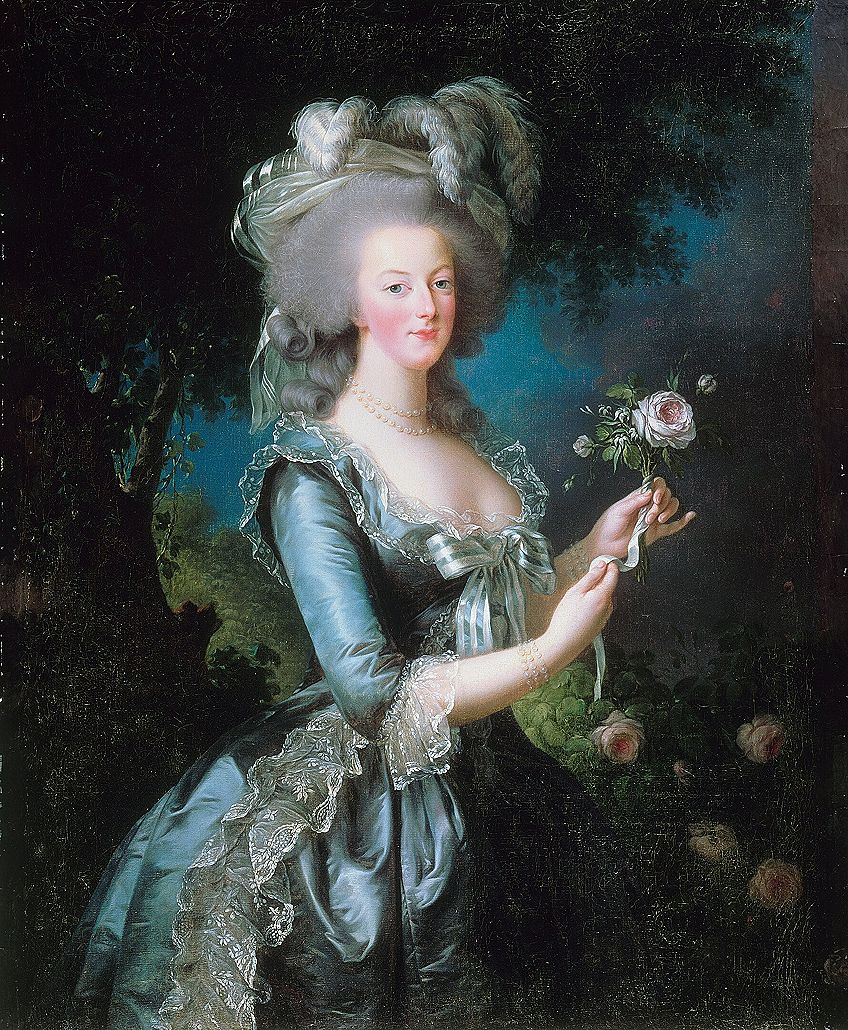
Rosa Bonheur (1822 – 1899)
| Date of Birth | 1822 |
| Date of Death | 1899 |
| Medium | Painting |
| Famous Artworks | Rosa Bonheur (1822 – 1899), The Horse Fair (1852 – 1855), and Sheep by the Sea (1865) |
| Themes | Animals, portraits, and nature |
Rosa Bonheur was a French Realist artist known for her stunning paintings of animals and rural landscapes. Born in Bordeaux in 1822, Bonheur received early training from her artist father and eventually gained international recognition for her work, becoming one of the most successful artists of her time. Her paintings are characterized by their technical precision and attention to detail, as well as their powerful emotional impact. Bonheur’s depictions of animals are particularly notable for their realistic, almost photographic quality, as she had a deep understanding of animal anatomy and behavior.
Bonheur’s groundbreaking contributions to the art world helped pave the way for future generations of female artists, and her legacy continues to inspire and captivate audiences around the world.
Why Is Rosa Bonheur Considered Such an Influential French Modern Artist?
Rosa Bonheur’s influence on the art world lies not only in her exceptional talent as a painter but also in her breaking down of gender barriers in the male-dominated art world of the 19th century. Her ability to accurately capture the essence of animals and nature in her work earned her widespread recognition and admiration.
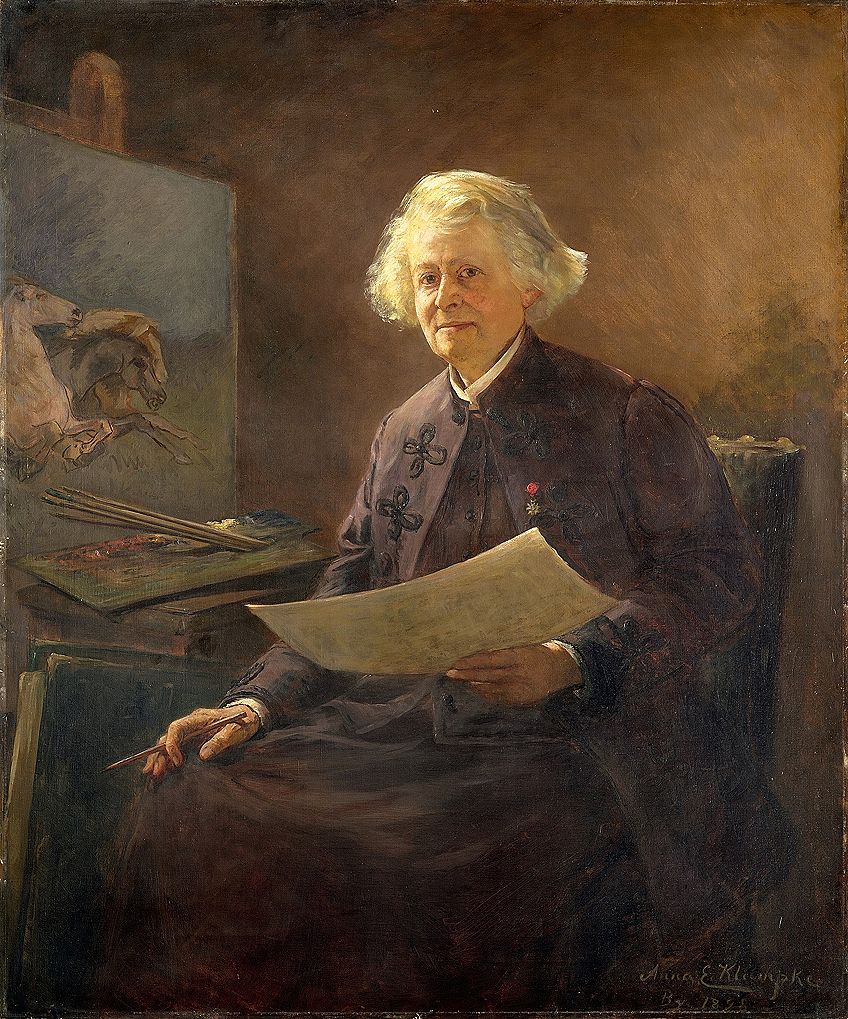
Additionally, Bonheur’s non-conformist lifestyle, including her preference for men’s clothing and her independence as a single woman living and working in a male-dominated society, challenged traditional gender roles and paved the way for future generations of female artists. Through her art and her personal life, Bonheur made a lasting impact on the art world and on society as a whole.
Modern French Art Example: Rosa Bonheur (1822 – 1899)
Rosa Bonheur’s self-portrait is a stunning example of the artist’s technical skill and attention to detail. The painting shows Bonheur in a masculine outfit. She stares directly at the viewer with a sense of confidence and self-assuredness, her eyes conveying a strength and determination that is echoed in the bold brushstrokes and rich colors of the painting.
In her left hand, she is holding a painter’s palette, and with her right hand, she is petting a big dog.
The contrast between the dark, somber colors of her outfit and the brighter, more vibrant colors of the background serves to heighten the focus on Bonheur’s face and expression. By depicting herself in a traditionally masculine outfit, Bonheur challenges gender standards and asserts her own independence and individuality as a female artist in a male-dominated field.
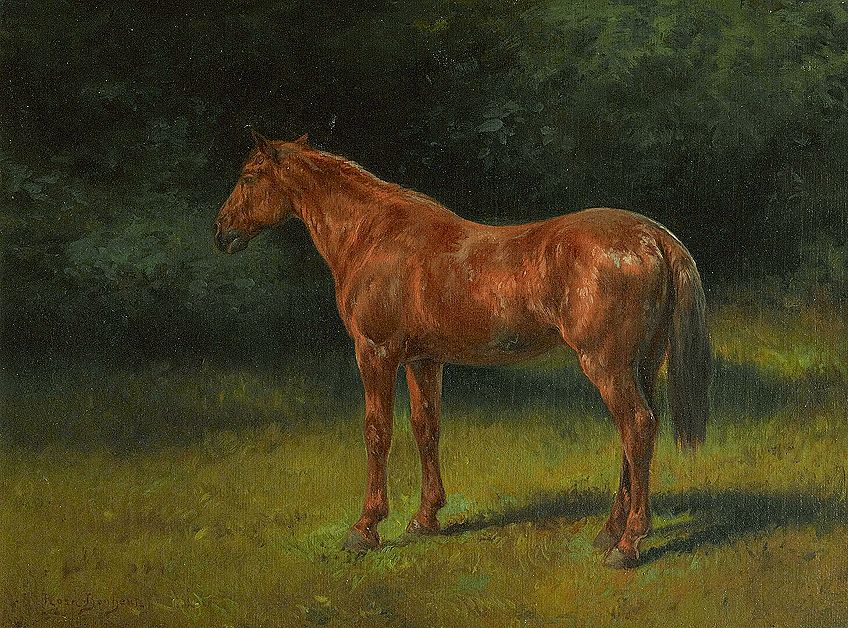
Edgar Degas (1834 – 1917)
| Date of Birth | 1834 |
| Date of Death | 1917 |
| Medium | Painting |
| Famous Artworks | The Bellelli Family (1858 – 1867), The Ballet Class (1871 – 1874), and In a Café (1875 – 1876) |
| Themes | Ballet dancers, laundresses, and milliners |
Edgar Degas was a French artist, considered one of the founders of Impressionism. He is known for his masterful depictions of the human form in motion, particularly dancers, as well as his innovative use of composition and color. Degas’ work reflects the changing cultural and social landscape of 19th-century France, capturing the vitality and energy of modern life in Paris. In addition to his famous paintings, he also produced sculptures, prints, and drawings that have had a lasting impact on the art world.
Degas’ legacy continues to inspire artists today, as his innovative approach to capturing the essence of modern life continues to resonate with audiences around the world.
Why Is Edgar Degas Considered Such an Influential French Modern Artist?
Degas’ use of bold, unconventional compositions and vivid color schemes challenged the traditional norms of the art world and helped to pave the way for the emergence of modern art in the 20th century. His influence can be seen in the work of many artists who followed in his footsteps, including Pablo Picasso, Henri Matisse, and Jackson Pollock. Degas’ legacy made a lasting impact on the way we perceive and make sense of the world around us today.
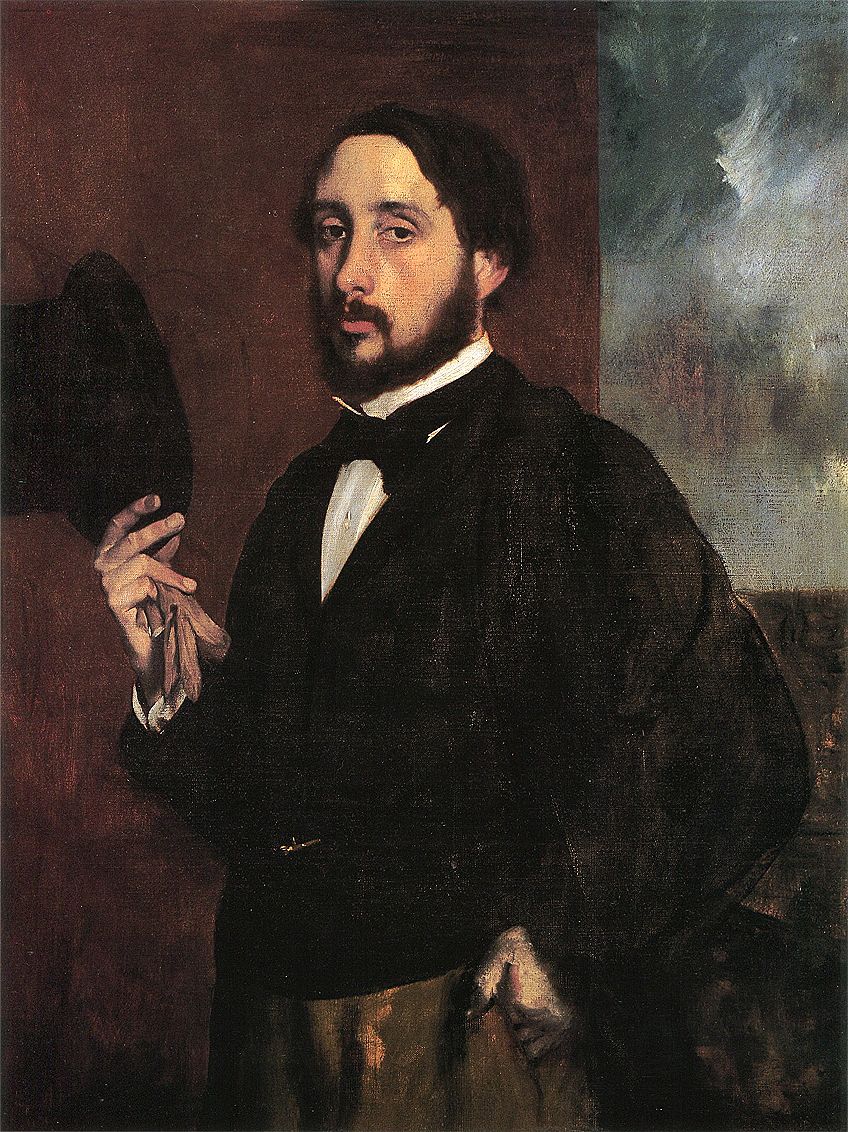
Modern French Art Example: In a Café (1875 – 1876)
In a Café (1875–1876) by Edgar Degas is a painting that captures the atmosphere of a Parisian café in the late 19th century. The composition is dynamic, with the two figures arranged in a diagonal line that leads the viewer’s eye across the canvas. Degas uses light and shadow to create depth and atmosphere, with the dimly lit interior of the café contrasting with the bright sunlight streaming in from outside.
The figures in the painting are a man and a woman sitting next to each other.
The man is looking at something not shown in the painting – potentially the door, and the woman appears to be lost in thought. Degas’ use of feathery brushstrokes and muted hues create a sense of activity and spontaneity as if the scene is constantly shifting and evolving. Through this painting, Degas captures the energy of modern urban life, revealing the complex social and cultural dynamics at play in the bustling world of the Parisian café.

Paul Cézanne (1839 – 1906)
| Date of Birth | 1839 |
| Date of Death | 1906 |
| Medium | Painting |
| Famous Artworks | The Basket of Apples, (1895), The Large Bathers (1898), and Pyramid of Skulls (1901) |
| Themes | Melancholy, dreams, fantasies, and religious pictures |
Paul Cézanne (1839-1906) was a French Post-Impressionist painter whose art profoundly influenced the development of modern art in the 20th century. He is best known for his revolutionary approach to representing nature and objects in painting, which was based on his concept of ‘structuring sensations’ through the use of color and form. Paul Cézanne is considered one of the most significant French modern painters due to his revolutionary approach to painting.
This challenged conventional notions of representation and cleared the way for the evolution of modern art movements in the 20th century.
Why Is Paul Cézanne Considered Such an Influential French Modern Artist?
His use of flattened perspective, abstraction, and his focus on the structural aspects of objects and landscapes had a profound impact on the development of Cubism, Fauvism, and later abstract art movements. His paintings were a departure from the dominant artistic style of his time, and his influence continues to shape contemporary art today. Cézanne’s legacy is rooted in his ability to bridge the gap between Impressionism and modern art, and his contributions to the development of modern art have secured his place as one of the most influential artists of his time.
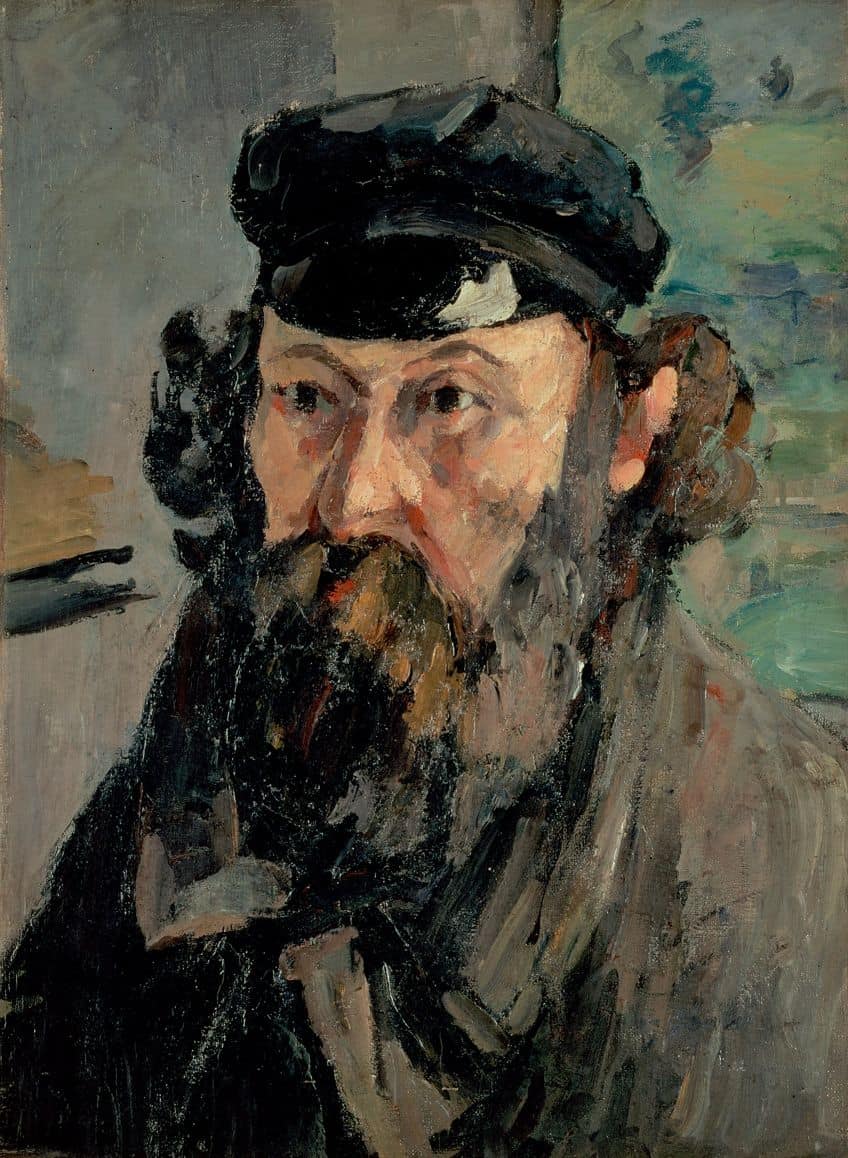
Modern French Art Example: The Large Bathers (1898)
The Large Bathers (1898) is an iconic painting by Paul Cézanne that depicts a group of nude figures in a natural landscape. The painting is notable for its geometric composition, which features flat planes of color and simplified forms that push the boundaries of traditional perspective.
The figures are arranged in a triangular formation that creates a sense of stability and balance, while also emphasizing the play of light and shadow across their bodies.
Through his use of color and brushwork, Cézanne creates a rich texture that evokes the sensuality of the human form and the organic shapes of the surrounding nature. The painting is a masterful example of Cézanne’s revolutionary approach to art, which would go on to influence generations of artists in the development of modern art.
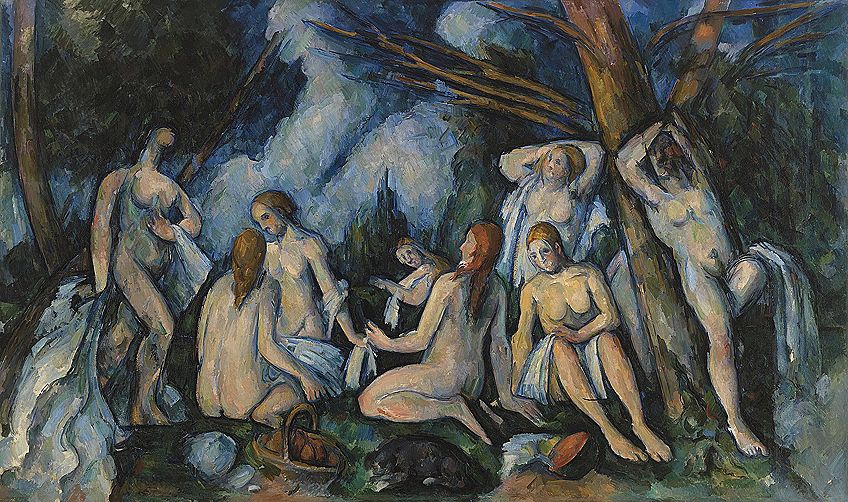
Pierre-Auguste Renoir (1841 – 1919)
| Date of Birth | 1841 |
| Date of Death | 1919 |
| Medium | Painting |
| Famous Artworks | Luncheon of the Boating Party (1880 – 1881), Dance at Bougival (1883), and The Large Bathers (1884 – 1887) |
| Themes | French life, companionship, dialogue, flirting, dancing, and parties |
Pierre-Auguste Renoir was a French painter known for his mastery of capturing the beauty and movement of human forms and landscapes, using vibrant colors and bold brushstrokes to convey a sense of light and atmosphere. His oeuvre spans a wide range of subjects, from portraits of Parisian society to serene landscapes.
His works are characterized by their intimate and joyful depictions of everyday life.
Why Is Pierre-Auguste Renoir Considered Such an Influential French Modern Artist?
Pierre-Auguste Renoir’s contributions to Impressionism, along with his unique style and technical innovations, have made him one of the most celebrated artists of the 19th century. His use of bold, vibrant colors and loose brushstrokes captured the essence of modern life and challenged traditional notions of beauty in art.

Renoir’s depictions of people, particularly women, were celebrated for their sensuality and realism, and his love of nature and the outdoors is evident in his landscapes and still lifes. His influence on the development of modern art cannot be overstated, as his unique style and approach paved the way for the emergence of many important movements in the 20th century.
Modern French Art Example: Luncheon of the Boating Party (1880 – 1881)
Pierre-Auguste Renoir’s Luncheon of the Boating Party (1880 – 1881) is a vibrant and bustling masterpiece that captures the essence of 19th-century Parisian society. The painting features a group of friends gathered on the balcony of the Maison Fournaise restaurant, enjoying a leisurely lunch on a sunny afternoon. The scene is alive with activity, with figures engaged in conversation, eating, drinking, and smoking.
Renoir’s use of light and color creates a warm and inviting atmosphere, as the dappled sunlight illuminates the faces and clothing of the subjects.
The composition is masterfully balanced, with figures arranged in a natural and effortless manner. Through this work, Renoir celebrates the pleasures of leisure and companionship, capturing a moment in time that is both timeless and enchanting.

Paul Gauguin (1848 – 1903)
| Date of Birth | 1848 |
| Date of Death | 1903 |
| Medium | Painting |
| Famous Artworks | The Yellow Christ (1889), When Will You Marry? (1892), and Where Do We Come From? What Are We? Where Are We Going? (1897) |
| Themes | The opposing experience of despair and passion, the concept of paradise, poetry, symbolic meaning, life, and death |
Paul Gauguin (1848-1903) was a French Post-Impressionist artist known for his bold use of color, unconventional subject matter, and innovative techniques. After a successful career as a stockbroker, Gauguin turned to art in his late 20s, quickly establishing himself as a leading figure in the Parisian art scene.
However, his desire for artistic freedom and a more earthy lifestyle led him to leave Europe for Tahiti, where he created some of his most iconic works, characterized by their vibrant colors, simplified forms, and stylized figures.
Why Is Paul Gauguin Considered Such an Influential French Modern Artist?
Paul Gauguin is widely regarded as one of the most significant French contemporary painters due to his unique artistic style and innovative approach to painting. His use of bold colors, flattened forms, and stylized figures challenged conventional artistic conventions and paved the way for the development of modern art. His time in Tahiti had a profound impact on his work, inspiring him to create vivid and expressive paintings that celebrated the beauty and simplicity of island life.
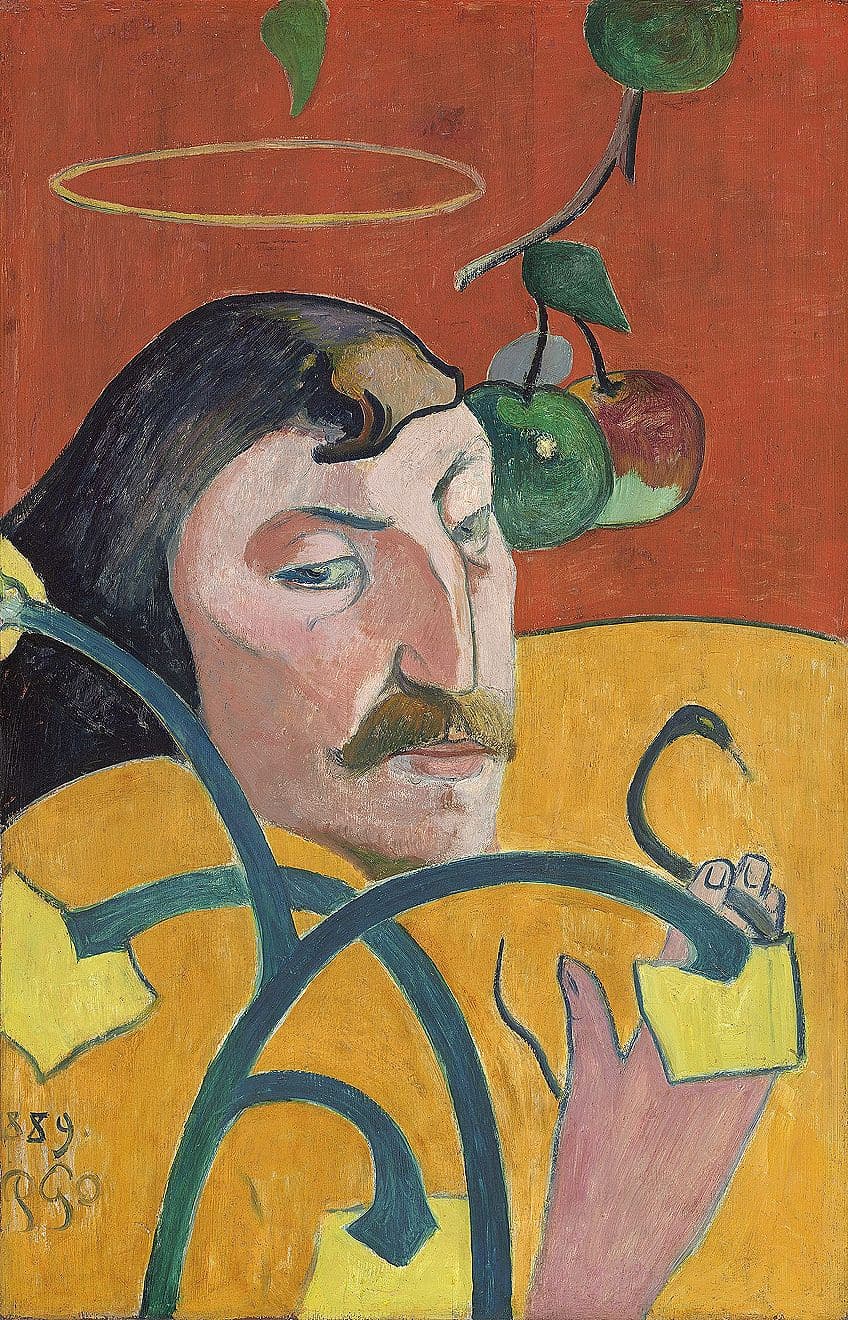
Additionally, Gauguin’s willingness to pursue his artistic vision without compromise, even at the cost of his personal relationships and financial stability, has inspired generations of artists to follow their creative passions fearlessly. His legacy continues to resonate with art enthusiasts and scholars alike, cementing his place as an icon of the modern art movement.
Modern French Art Example: The Yellow Christ (1889)
The Yellow Christ (1889) by Paul Gauguin is a powerful and emotionally charged work of art that utilizes vibrant colors and stylized forms to create a deeply symbolic image. The painting depicts a figure of Christ on the cross, rendered in bright yellow against a vivid landscape in the background. Simplified figures of the women mourning Christ’s death are painted in the foreground.
Gauguin’s use of color creates a striking visual contrast, emphasizing the figure’s divine nature and highlighting the agony of his crucifixion.
The simplified, almost abstract forms of the figure and the landscape surrounding him add to the painting’s emotional intensity, emphasizing the spiritual and symbolic aspects of the image. Overall, The Yellow Christ is a masterful example of Gauguin’s ability to convey complex ideas through simple yet powerful visual elements, leaving a lasting impression on the viewer’s mind.

Suzanne Valadon (1865 – 1938)
| Date of Birth | 1865 |
| Date of Death | 1938 |
| Medium | Painting |
| Famous Artworks | The Abandoned Doll (1921), The Blue Room (1923), and Reclining Nude (1928) |
| Performance Themes | Figures, portraits, and domestic scenes |
Suzanne Valadon was a French painter and artist’s model, who defied the societal norms of her time by pursuing a career as an artist in Paris. She gained recognition for her figurative paintings, which depicted the female form in a bold and unconventional manner. Valadon’s style was characterized by strong colors, dynamic compositions, and expressive brushwork, which conveyed a sense of vitality and energy. Her works often explored themes of sexuality and the female body, challenging the traditional depictions of women in art.
Valadon’s legacy as a pioneering female artist has influenced subsequent generations of artists and continues to inspire feminist art movements today.
Why Is Suzanne Valadon Considered Such an Influential French Modern Artist?
Suzanne Valadon is regarded as an influential French modern artist due to her significant contributions to the art world as a female painter, model, and muse during a time when women artists were not widely recognized. She was a pioneer in the Impressionist and Post-Impressionist movements and is known for her bold, colorful, and expressive paintings of the female form, which often challenged societal ideals and expectations. Valadon’s work inspired and paved the way for future generations of female artists, and her legacy continues to be celebrated and appreciated today.

Artwork Example: The Abandoned Doll (1921)
The Abandoned Doll (1921) by Suzanne Valadon is a poignant and evocative painting that portrays the loneliness and vulnerability of childhood. The central figures are a mother and a daughter sitting on a bed. It shows the difficulty of the female experience of going through puberty – with the girl turning away from her mother wanting to comfort her, her toys lying all over the floor, and her body showing the transition into adulthood.
The composition is masterfully executed, with a subtle use of color and light that creates a sense of melancholy and nostalgia.
Through her sensitive portrayal of this simple yet powerful scene, Valadon captures the universal and intimate emotions of the transition from childhood into womanhood and invites the viewer to reflect on the fragility and beauty of the human experience.

Henri Matisse (1869 – 1954)
| Date of Birth | 1869 |
| Date of Death | 1954 |
| Medium | Painting |
| Famous Artworks | The Green Stripe (1905), Le bonheur de vivre (1905 – 1906), and Dance (1910) |
| Themes | Joy, dance, music, dreams, the artist’s atelier, and the circus |
With a career spanning over six decades, Matisse is recognized as one of the most influential artists of the 20th century, and a pioneer of the Fauvism movement. He is known for his vibrant paintings and paper cut-outs, which are characterized by their expressive use of color, dynamic composition, and emphasis on the decorative. Matisse’s work often drew inspiration from nature and the human form.
He explored a range of themes, from still lifes and landscapes to portraiture and the female nude.
Why Is Henri Matisse Considered Such an Influential French Modern Artist?
Henri Matisse is considered one of the most influential French modern artists of the 20th century due to his groundbreaking contributions to the art world. He challenged the traditional norms of art by using bold colors and simplified forms, which paved the way for the development of the Fauvism movement.
Matisse’s use of color was especially significant, as he saw it as a means to express emotion and convey a sense of joy and vitality in his art. He was also a master of composition and design, as seen in his paper cut-outs, which continue to inspire contemporary artists today. Matisse’s legacy not only impacted the art world but also influenced fashion, interior design, and other aspects of popular culture. His innovative approach to art has solidified his position as one of the most influential modern artists in history.
Modern French Art Example: Dance (1910)
Dance (1910) is a visually and conceptually striking painting by Henri Matisse that showcases his bold use of color and simplified forms. The painting depicts five nude figures holding hands and dancing against a vibrant blue background. The figures are rendered in simplified, abstract shapes, with Matisse using color to convey a sense of movement and rhythm.
The vibrant orange, brown, and yellow tones of the figures’ bodies contrast with the blue and green background, creating a dynamic tension between the warm and cool colors.
The concept of dance is a recurring theme in Matisse’s work, and in this piece, he captures the joy and vitality of the human form in motion. The painting’s simplified forms and vivid colors serve to express the essence of the dance, rather than the literal depiction of it, and continue to inspire and influence artists today.
Louise Bourgeois (1911 – 2010)
| Date of Birth | 1911 |
| Date of Death | 2010 |
| Medium | Sculpture |
| Famous Artworks | Cell (1989 – 1993), Spider (1994), and Maman (1999 – 2002) |
| Themes | The unconscious mind, sexual passion, envy, disloyalty, fear, anxiety, loneliness, and the body |
Louise Bourgeois, a French-American artist, had a successful career that lasted over seven decades. Bourgeois frequently explored themes of femininity, sexuality, and the human body in her work, often utilizing non-traditional materials like rubber, fabric, and found objects. Her creations are well-known for their emotional depth, intricate psychological elements, and intense physicality. Over the course of her practice, Bourgeois was showered with numerous accolades, including a retrospective exhibition at the Museum of Modern Art in New York in 1982.
Additionally, in 2007, she became the first female artist to have a significant exhibition of her entire body of work up until that point in her career at the Tate Modern in London. Her impact on the contemporary art world remains evident today.
Why Is Louise Bourgeois Considered Such an Influential French Modern Artist?
Louise Bourgeois is considered one of the most influential French modern artists due to her groundbreaking contributions to the world of sculpture and installation art. Her ability to explore complex themes of femininity, sexuality, and the human body through her work with unconventional materials was truly pioneering.
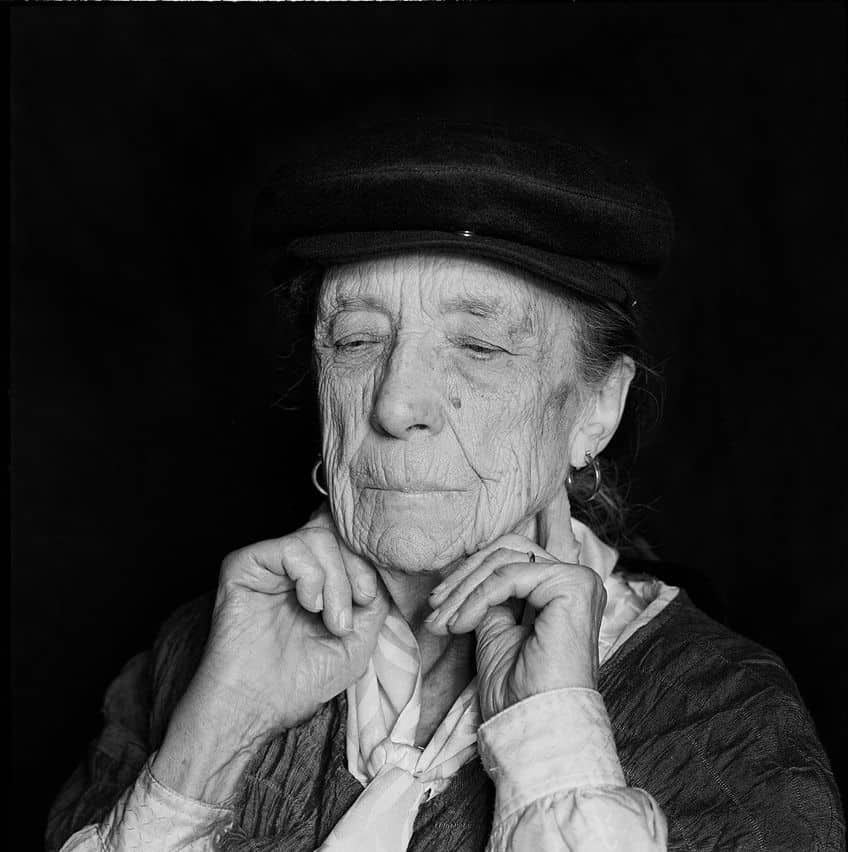
Her pieces often have an emotional and psychological depth that resonates with viewers on a profound level, making her work stand out amongst her contemporaries. Additionally, Bourgeois’ ability to continuously innovate throughout her career, and her willingness to push artistic boundaries, have left an indelible mark on the contemporary art world. Her legacy continues to inspire and influence artists today, making her a true icon of the art world.
Modern French Art Example: Maman (1999 – 2002)
The sculpture known as Maman is an attention-grabbing and thought-provoking work of art. The sculpture features a towering bronze spider that stands at a height of over nine meters, with elongated legs that sprawl across the ground.
The spider’s formidable presence is softened by the inclusion of delicate, egg-shaped sacs that hang from its underbelly.
Bourgeois’ use of the spider as a representation of motherhood is evident in the sculpture’s title, “Maman” which translates to “Mother” in French. The artwork delves into themes of femininity, motherhood, and protection as the spider’s maternal instincts are contrasted with its fearsome appearance. Through the use of symbolism, material, and scale, Bourgeois creates a multi-faceted and intricate work of art that urges the viewer to ponder its themes on both a visual and conceptual level.
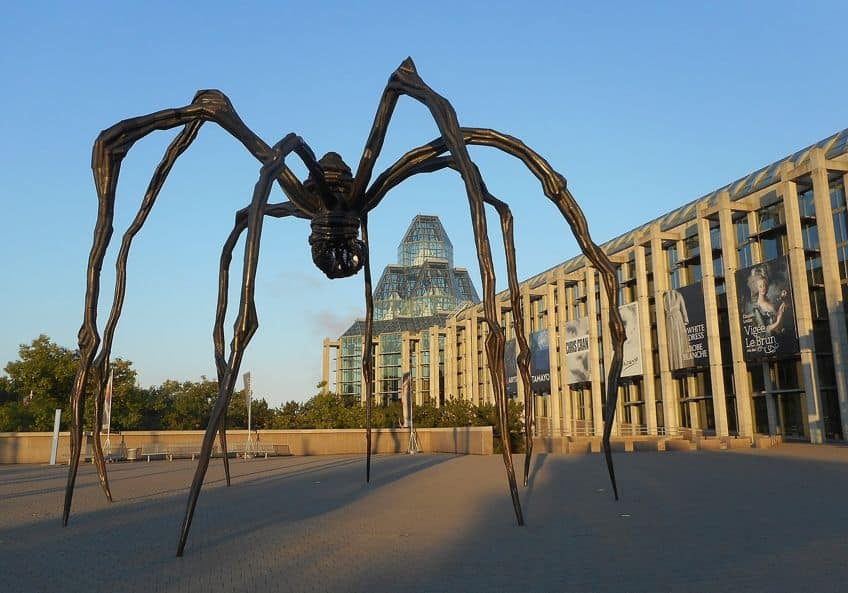
In conclusion, the modern French contemporary artists and French modernist painters discussed above have made significant contributions to the development of art in the modern era. Each artist brought their unique style, techniques, and themes to the forefront, challenging the traditional notions of art and paving the way for new artistic movements. From the Post-Impressionist paintings of Paul Cézanne to the avant-garde sculptures of Louise Bourgeois, the diversity and richness of French art are evident. These artists continue to inspire contemporary artists and art lovers alike, and their works remain influential and relevant today.
Frequently Asked Questions
How Has French Modern Art Evolved Over the Years?
French modern art has undergone significant changes and evolution over the years, reflecting the diverse cultural, social, and political influences that have shaped the country’s artistic landscape. From the early Impressionist movement, which emphasized the sensory experience of capturing the fleeting moments of modern life, to the radical experimentation of the Cubist movement, which shattered traditional notions of representation and perspective, French modern art has continued to push the boundaries of artistic expression. The rise of Fauvism, Surrealism, and Abstract Expressionism further expanded the possibilities of art, with artists using bold colors, unconventional forms, and subjective imagery to explore new realms of consciousness and emotion. Today, French modern art continues to evolve, with contemporary artists experimenting with a range of media and techniques to explore the complexities of the modern world.
Who Are the Most Prominent French Modern Artists?
It is difficult to identify one of the most prominent French modern artists, as there have been many influential and groundbreaking artists throughout French modern art history. Some of the most well-known and influential French modern artists include Claude Monet (1840 – 1926), Henri Matisse (1869 – 1954), Edgar Degas (1834 – 1917), and Louise Bourgeois (1911 – 2010). These artists and many others have left a significant impact on the art world through their innovative techniques, unique perspectives, and revolutionary approaches to art.
Have Female French Modern Artists Been Represented the Same As Male French Modern Artists?
Historically, female artists have been underrepresented and undervalued in the art world, and French modern art is no exception. While there were notable female French modern artists such as Suzanne Valadon (1865 – 1938) and Élisabeth Vigée Le Brun (1755 – 1842), their work and achievements were often overshadowed by their male contemporaries. It was not until the late 20th century that there was a significant increase in the visibility and recognition of female artists in France and around the world. However, there is still progress to be made in achieving true gender equality and representation in the art world.
Isabella studied at the University of Cape Town in South Africa and graduated with a Bachelor of Arts majoring in English Literature & Language and Psychology. Throughout her undergraduate years, she took Art History as an additional subject and absolutely loved it. Building on from her art history knowledge that began in high school, art has always been a particular area of fascination for her. From learning about artworks previously unknown to her, or sharpening her existing understanding of specific works, the ability to continue learning within this interesting sphere excites her greatly.
Her focal points of interest in art history encompass profiling specific artists and art movements, as it is these areas where she is able to really dig deep into the rich narrative of the art world. Additionally, she particularly enjoys exploring the different artistic styles of the 20th century, as well as the important impact that female artists have had on the development of art history.
Learn more about Isabella Meyer and the Art in Context Team.
Cite this Article
Isabella, Meyer, “French Contemporary Artists – Modern French Art.” Art in Context. May 30, 2023. URL: https://artincontext.org/french-contemporary-artists/
Meyer, I. (2023, 30 May). French Contemporary Artists – Modern French Art. Art in Context. https://artincontext.org/french-contemporary-artists/
Meyer, Isabella. “French Contemporary Artists – Modern French Art.” Art in Context, May 30, 2023. https://artincontext.org/french-contemporary-artists/.


